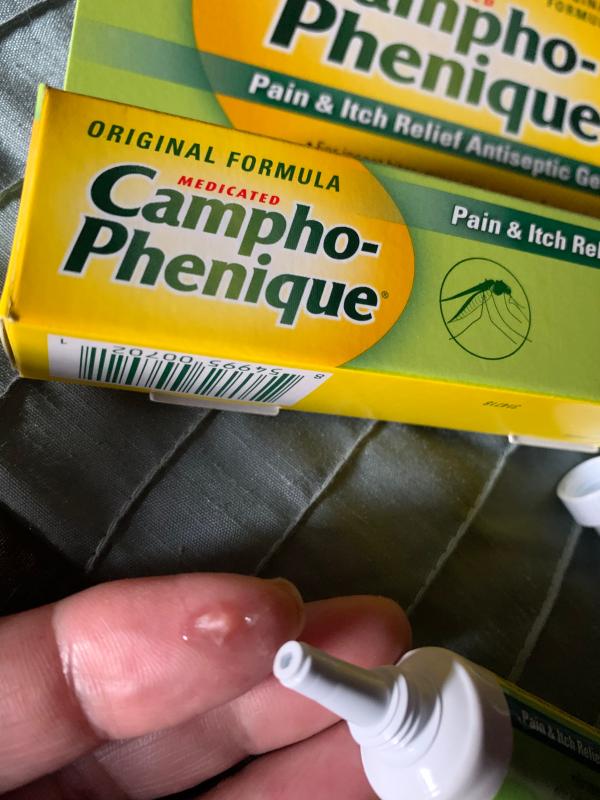Can You Put Campho Phenique In Your Mouth?

The mouth is an oval-shaped cavity inside the skull. The two main functions of the mouth are eating and speaking. Parts of the mouth include the lips, vestibule, mouth cavity, gums, teeth, hard and soft palate, tongue, and salivary glands. The mouth is also known as the oral cavity or the buccal cavity.
Around 60% of established drug products available commercially are administered via the oral route. Many drugs can be administered orally as liquids, capsules, tablets, or chewable tablets. Because the oral route is the most convenient and usually the safest and least expensive, it is the one most often used. However, it has limitations because of the way a drug typically moves through the digestive tract.
For drugs administered orally, absorption may begin in the mouth and stomach. However, most drugs are usually absorbed from the small intestine. The drug passes through the intestinal wall and travels to the liver before being transported via the bloodstream to its target site. The intestinal wall and liver chemically alter (metabolize) many drugs, decreasing the amount of drug reaching the bloodstream. Consequently, these drugs are often given in smaller doses when injected intravenously to produce the same effect.
When a drug is taken orally, food and other drugs in the digestive tract may affect how much of and how fast the drug is absorbed. Thus, some drugs should be taken on an empty stomach, others should be taken with food, others should not be taken with certain other drugs, and still, others cannot be taken orally at all.
What is Campho-Phenique?
Campho-Phenique is a medication used to relieve itching and pain from insect bites or skin irritation. It is also used to help lower the chance of infection from minor cuts, scrapes, burns, or insect bites and to treat cold sores.
What do I need to tell my doctor BEFORE I take Campho-Phenique?
• If you have an allergy to camphor, phenol, or any other part of Campho-Phenique (camphor and phenol).
• If you are allergic to Campho-Phenique (camphor and phenol); any part of Campho-Phenique (camphor and phenol); or any other drugs, foods, or substances. Tell your doctor about the allergy and what signs you had.
• If a large area needs to be treated.
What is the main ingredient in Campho-Phenique?
The active ingredients in Camphorated Phenol are Camphor 10.8% And Phenol 4.7%. Inactive ingredients include; Colloidal Silicon Dioxide, Eucalyptus Oil, Glycerin, Light Mineral Oil.

Can you put Campho Phenique in your mouth?
No, Campho Phenique should never be placed in your mouth, it contains, camphor which can cause trouble breathing, seizures, and death. High doses of camphor, either inhaled or in the mouth, can also be risky. They can cause severe irritation or seizures. The first symptoms of camphor toxicity occur quickly (within 5 to 90 minutes), and can include burning of the mouth and throat, nausea, and vomiting. Do not put Campho Phenique in your ears, nose, eyes, or mouth.
Campho-Phenique also contains eucalyptus oil. Accidental swallowing of even small amounts can cause serious illness. Symptoms include burning in the throat and mouth, sickness, muscle weakness, dizziness, pinpoint pupils, rapid heartbeat, suffocation, delirium, and convulsions. If you accidentally swallow Campho-Phenique, see a doctor immediately.
If you have itching, pain, or irritation in the mouth, kindly talk to your doctor before putting any medication or ointment into the mouth. He or she will guide you on the most appropriate medication to use based on proper diagnosis.
What are some things I need to know or do while I take Campho-Phenique?
• Tell all of your health care providers that you take Campho-Phenique (camphor and phenol). This includes your doctors, nurses, pharmacists, and dentists.
• Check with the doctor before putting Campho-Phenique (camphor and phenol) on open or deep wounds, animal bites, or very bad burns or cuts.
• If you get Campho-Phenique (camphor and phenol) in the eyes, flush right away with cool water and get medical help.
• This medicine may cause harm if swallowed. If Campho-Phenique (camphor and phenol) is swallowed, call a doctor or poison control center right away.
• Tell your doctor if you are pregnant or plan on getting pregnant. You will need to talk about the benefits and risks of using Campho-Phenique (camphor and phenol) while you are pregnant.
• Tell your doctor if you are breastfeeding. You will need to talk about any risks to your baby.
How is this Campho-Phenique best taken?
Use Campho-Phenique (camphor and phenol) as ordered by your doctor. Read all information given to you. Follow all instructions closely.
• Do not take Campho-Phenique (camphor and phenol) by mouth. Use on your skin only. Keep out of your mouth, nose, and eyes (may burn).
• Wash your hands before and after use. Do not wash your hands after use if putting this on your hand.
• Clean the affected part before use. Make sure to dry well.
• Put a thin layer on the affected skin and rub it gently.
• Do not use coverings (bandages, dressings) unless told to do so by the doctor.
What do I do if I miss a dose?
• If you use Campho-Phenique (camphor and phenol) on a regular basis, put on a missed dose as soon as you think about it.
• If it is close to the time for your next dose, skip the missed dose and go back to your normal time.
• Do not put on 2 doses at the same time or extra doses.
• Many times Campho-Phenique (camphor and phenol) is used on an as-needed basis. Do not use more often than told by the doctor.
What are some side effects that I need to call my doctor about right away?
WARNING/CAUTION: Even though it may be rare, some people may have very bad and sometimes deadly side effects when taking a drug. Tell your doctor or get medical help right away if you have any of the following signs or symptoms that may be related to a very bad side effect:
• Signs of an allergic reaction, like rash; hives; itching; red, swollen, blistered, or peeling skin with or without fever; wheezing; tightness in the chest or throat; trouble breathing, swallowing, or talking; unusual hoarseness; or
These are not all of the side effects that may occur. If you have questions about side effects, call your doctor. Call your doctor for medical advice about side effects.
You may report side effects to the FDA at 1-800-332-1088. You may also report side effects at https://www.fda.gov/medwatch.



